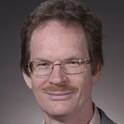
The conditional-moment closure (CMC) equation for the evolution of a large Lewis number scalar, soot, is derived starting from the joint probability density function (pdf) equation for the gas-phase mixture fraction, ξ g , and the soot mass fraction, Y s . Unlike previous approaches starting with the joint pdf, the residual terms that result from the typical closure models were retained. A new formulation of the one-dimensional turbulence (ODT) model suitable for spatially evolving flows with buoyant acceleration and radiative transport in participating media was employed to carry out simulations of a prototypical ethene fire. The resulting ODT evolution of ξ g and Y s was used to assess the significance of various terms in the CMC equation including the residual correlations. The terms involving differential diffusion are found to be important along with the soot source terms and the large-scale evolution of both ξ g and Y s . Of particular importance in the regions in mixture-fraction space around the soot production and consumption is a residual term, not previously identified, related to the correlation between the differential diffusion and Y s . This term results in a diffusion-like behavior of Y s in the mixture fraction coordinate that has an apparent Lewis number near unity. In scenarios where the large Lewis number component is a non-negligible component of the mixture fraction (i.e., large soot loading), it is found easier to employ a mixture fraction neglecting this component. Such a mixture-fraction variable has a chemical source term, but this appears easier to model than the differential diffusion and dissipation terms that result when the large Lewis number component is retained in the mixture-fraction definition.
Available at: http://works.bepress.com/rodney_fox/52/

This article is from Proceedings of the 2006 Summer Program-Center for Turbulence Research, Stanford, CA, pp.311-323.